On today’s podcast, we’re discussing Nature Cure and Skin. My guest is Dr. Ben Reebs. Raised in the Quaker tradition, Dr. Reebs grew up off-the-grid in central Washington state. Living close to nature in a family of healers, Dr. Reebs’ path began with a childhood steeped in medicine, exploration, and the power of the natural world. Dr. Reebs earned his doctorate of naturopathic medicine (ND) from the National University of Natural Medicine (NUNM) in Portland, Oregon.
Before naturopathic medical school, Dr. Ben Reebs was head cook at the Esalen Institute, a world-famous humanistic alternative education center in Big Sur, CA. While there, he had the opportunity to study mind-body medicine with prominent healers from all over the world.
With the experience he gained, Dr. Reebs healed himself of two life-long chronic diseases. Now, as a practicing doctor, he combines traditional healing wisdom with current scientific knowledge, enabling him to better meet diverse patient needs.
During this interview, we discuss some of the laws of vitalism and principles behind Naturopathic Medicine. This leads us into talking about the amazing attributes of skin and how we can heal skin with nature cure, including hydrotherapy and embrace a truly holistic approach to skin.
So please enjoy this interview…
Trevor Cates: Welcome to the spa doctor podcast. I’m Dr Trevor cates. Today we’re talking about nature, cure, and skin. My guest is Dr Ben Reeves. He was actually raised in the quaker tradition and grew up off the grid in central Washington state, living close to nature and a family of healers. Dr Reeves, path began with a childhood steeped in medicine exploration and the power of the natural world. He earned his doctorate nature pathic medicine degree from the National University of Natural Medicine in Portland, Oregon. Before nature, pathic medical school, Dr Reeves was head cook at the Esalen Institute, a world famous humanistic alternative education center in big Sur California, and he had the opportunity while he was there to study mind. Body medicine was prominent healers from around the world with the experience he gained. Dr. Reeves healed himself of two at lifelong chronic diseases and now as a practicing doctor, he combines traditional healing wisdom with current scientific knowledge, enabling him to help divert a diverse patient group.
Ben Reebs: And we discussed during this interview some of the laws of vitalism and principles behind nature pathic medicine. A lot of times on the podcast, I have doctors who’ve been in practice for many years on and Dr Reeves is actually new, fairly new to practice. He’s been out in practicing for a few years, so the nature pathic medical education is to fresh within him, so I enjoy in the, in the interview, picking his brain about some of the things that he learned in nature, pathic medical school, getting back to the history behind natural medicine and nature cure, and this then leads us into talking about the amazing attributes of skin and how the skin is one of our greatest pathways of detoxification and how we can heal the skin with nature cure, including hydrotherapy and embrace a truly holistic approach to skin. So please enjoy this interview. Ben. It’s so great to have you on my podcast. Welcome. Thank you, trevor. Thanks so much for having me. Yeah, absolutely. So you’re a nature pathic physician and like many nature pathic physicians or functional medicine to people in this, um, and as world of professionals, a lot of us have a story of what got us there. And this is no different for you, right? So why don’t you start by telling everybody how you got into it, why you became a nature pathic physician and particularly specializing in what you do. Yeah, I’d say
Speaker 2: for me, um, you know, it really all started with a growing up off the grid. I’m in the woods and the Pacific northwest for about 14 years. Um, I guess from the age of seven to 20, I, uh, I pumped all of my water by. We lived in a house without any running water or electricity and we even lived in, um, you know, military, a camping tents for a couple of years while we were building our house. So I really kinda grew up just surrounded by nature in Washington state. And um, for me it was just a, you know, the way things are. But little did I know later on in my twenties I realized, wow, I haven’t met anyone who’s done this hardly.
Speaker 1: And so you, but you ended up with getting some chronic diseases and ended up having to be.
Speaker 2: Yeah, I mean, as a, as a young child, I, uh, I’d say I had a pretty close close brush with death and um, I had some intestinal pollups, I won’t go into the details, but, um, I had pretty severe ibs and it was kind of moving toward a, an ibd or irritable bowel, Bowel Syndrome or disease I should say, you know, all sort of colitis or Crohn’s. And um, I also had very severe seasonal allergies that I’d had up until my early thirties. So for about 30 years I had those two, um, chronic diseases and I tried everything on the planet, um, to, uh, to treat them. Uh, later on in my, uh, my twenties I lived at a retreat center called the Esalen Institute. Many people may be familiar with it. It’s in big Sur California and I lived there for about two years and then became head cook, was looking for about 300 people a night and I was studying for two years with a world famous and renowned, uh, healers from all, you know, such as a Deepak Chopra, Andrew, while, um, you know, a lot of famous Rom dos, a lot of famous teachers would come through and I’d be cooking for them, hanging out with them and um, in that kind of led me to nature pathic medicine.
Speaker 1: Great. Great. And, um, and so you went to nature pathic medical school and there’s parts of it that really resonated with you that, um, that you’ve integrated into your practice and leading you to work on a book on this too, right?
Speaker 2: That’s right. Yeah. I just, I love nature pathic medicine and um, you know, obviously we all know it’s a four year accredited program that is very challenging. You have to learn everything in conventional med school that they know that you learned and then you have to learn all of clinical nutrition in botanical medicine and physical medicine. So it, it’s a lot. Um, but I, I just loved it. I went to school in Portland, uh, at National University of natural medicine, a graduated just pretty recently, actually in 2016. So I’m a pretty brand new doctor. Um, but I, I, uh, I always resonated most with the roots of nature, pathic medicine, uh, you know, kind of the pioneers and um, and it came out of Germany, but really it’s, um, it’s shares so much in common with so many of the healing, uh, foundations all over the world such as iron, vedic, Chinese medicine.
Speaker 2: And um, so I, I would say that I really am kind of that Classic Integrative Medicine Practitioner. I’m also a vitalistic practitioner in that I really, um, I really use the old principles of, of vitalism and um, what I mean by that is a really honoring the healing power of nature and as an expert, as a specialist in the body’s innate ability to heal itself, working with those forces as opposed to working against them. And as you know, we have such an arsenal in our, in our tool toolbox. I mean, I’ve got my dea license here in, in Portland, Oregon, so I can prescribe opiates and yet I’m, I’m, we’re also working with nature and I’m working with people, um, in a way that honors their imbalanced their disease and sees it as an intelligent language that their body’s communicating to me and to them about where the imbalances are.
Speaker 2: So working with that to help them heal and recover and resolve their disease. Right. Okay. So let’s talk about these seven laws of vitalism. So can you talk about pays? Yeah. Well, um, first of all, I’d have to, I just have to say that I’m, I’m very indebted to the nature pathic medicine institute or Nmi founded by Jim sensitive and others. Uh, Dr Jim [inaudible] was the founder and the founding president of the American Association of Nature Pathic Physicians. And without him, I don’t think our profession would still be alive because of his time. There were only about six mds practicing back in the 19 seventies, late 19 seventies, early 19 eighties. It was such a small and dying profession. Um, but, uh, I’ve been kind of putting together the principles, the laws that are written about by the founders and uh, yeah, I’ve come up with a seven laws of vitalism or first one really starts with the vis a vis a vis medicaid tricks that we all have heard about this innate healing potential in the body.
Speaker 2: Uh, and that’s kind of where it all begins. It really is a law and it can be observed. See, here’s the thing, trevor, we know that the things I’m about to talk about, really, these aren’t randomized controlled trials, right? These are more clinically observed in our patients. And you know, there’s, there’s an old quote that the, the only true textbook is our patients. It’s like, um, and I, I love to read textbooks. I’m a total science geek. I love to geek out on, on pathophysiology and Mthfr and CBO and all of the amazing things that are coming out. And at the same time, I like to go back to these routes to the v’s and two, how can we work with this, this, um, this healing power of nature that can be quantified in certain ways, but it isn’t necessarily a reductionistic, a measurement that we can get on a lab.
Speaker 1: Right? Right. Absolutely. I mean, I think that what we’re talking about here are some pretty important fundamental principles of, of nature pathic medicine and really, uh, with, um, healing. Then the body’s ability to heal. And I think that a lot of times we forget these and we get kind of lost and away from them, disconnected from them in clinical practice. A lot of times we just lose sight of it. And I think it’s good for people to know that this is a lot of the roots of nature, pathic medicine to understand that one of the ways that, um, you know, really where we’re coming from and what’s so important to us and that these are still really alive and that even though we don’t talk about them to patients very often, that, that we do, um, we do really strongly believe in these and, and it’s part of our education and part of the foundation. So I appreciate you sharing this.
Speaker 2: When a patient walks into my office, I’m seeing that patient is not just a physiological condition in front of me, but, um, it really is that, that I’m totally told him that idea, you know, one of the six principles of our medicine that we’re treating the whole person and we’re seeing them as not just their disease, but they’re actually a person with, with a disease or with an imbalance.
Speaker 1: And that with skin in particular with dermatology. Um, let’s, let’s, let’s talk about some examples. Um, are related to skin.
Speaker 2: A skin is A. I mean, obviously I know you treat a lot of it and I see a lot of contact dermatitis, a lot of Eczema in my practice. And um, so one of the, one of the seven laws that I have is that I actually got from Dr Henry Lin Lar, is this, um, this law called the Trinity of disease, or you could call it the law of disease, but it’s that all disease is due to three things. It’s due to a lowered vital force. It’s due to the accumulation of waste materials and morbid toxins. And it’s also due to improper. I’m eliminatory functions in the body. In other words, a body’s not able to get things out. And then there’s also the fact that, um, when the blood and the limb for abnormally composed, and this, this is kind of old language, when the blood and lymph or abnormally composed in the human being than, um, than disease will result.
Speaker 2: And so when somebody comes into my office with a skin condition, um, the first thing I’m going to, I’m going to do is I’m gonna look for toxemia in their body. I’m going to look for toxicity and um, we’re going to try to figure out where is it coming from and, and, and is the, how is this person reacting to it and I’m going to try to lower it and each person is going to be a little different. The first thing we’re going to start with is food obviously, and we can do know an Igg food panel or I do a special of food intolerance testing, uh, that originated here in the Pacific northwest in spokane, Washington, and the 19 thirties. Um, but no, there’s, there’s a lot of ways to do it, but we’re going to identify what are the one or two or three foods that this person is reacting to and we’re going to try to lower them in their, in their, um, in their diet.
Speaker 2: And more times than not, they’re there. Some of their skin issues will improve now. Um, of course the skin issues are often going to be due to other things that happened in their past. Maybe I’m emotional things they’ve been through that are unresolved. And um, so maybe I’ll make a referral for that or maybe I’ll use another modality such as, um, hypnotherapy or homeopathy or maybe some flower essences, you know, depending on, um, there’s so many tools in our toolbox. Uh, and so when somebody comes in with a skin issue, I’m seeing it as a complex thing. It’s not just, I’m not going to try to suppress it because if we suppress it, it often comes back even worse than before.
Speaker 1: Yeah, absolutely. I think it’s a, you know, it is important to look at skin, you know, I talk about skin being our magic mirror that gives us great clues about our overall health and that it is connected to all different aspects of our body and sometimes just this outward manifestation of something else going on. And, and so if someone is eating foods that their body is reacting to, certainly it makes sense that it could show up on the skin first and people might not be aware of digestive symptoms. They might not even have them. And a lot of times people think if I’m eating something that’s not right for me, I should have digestive symptoms, but that’s definitely not always the case. Sometimes it is, but there are a lot of different other ways that people can respond to foods that are not good for them. It’s, um, and, and part of that is the immune response and some of the, uh, you know, the internal inflammation that’s occurring as related to, to get issues that, um, if somebody continue down the road and they didn’t address it, then they probably will eventually develop other symptoms. Maybe digestive symptoms or other things. Right?
Speaker 2: Yeah. It’s so true. And, um, it, uh, you know, I find that the old nature pathic medicine so fascinating. Like I said, I’m a total functional medicine Geek. I’m good friends with a lot of the, the, the well known functional medicine people in the space, you know, I love to listen to their podcasts. I know that some of them personally and um, and I apply their principles. And at the same time, I’m so inspired by the old nature pathic textbooks and particularly this idea, a lot of people on this podcast probably don’t know what enterology is. The among Tories are the organs of elimination. And according to classic neurology, there are five main ones. The main ones are liver, gut, genital urinary tract, skin and lungs. So the skin is actually one of the five main a month. He’s, in other words, it’s one of the five main ways that the body removes.
Speaker 2: And so when somebody has a skin issue, I immediately, I’m going to look at their genital urinary tract and see if they’re having frequent uti. I’m going to look at their lungs and I’m going to see if they’re having frequent respiratory infections or upper respiratory infections. I’m going to look at their liver and I’m going to test it. I’m going to test it in certain ways, you know, take their pulse, their Chinese bowls, for example. See if the liver pulse is disturbed. I’ll look at their case history and see if there’s indications that they have liver congestion. Um, and then I’ll also look at, um, the other, other areas and if we can address, if we can identify that toxicity is building up in one of those five areas for this person, then I’m more times than not, trevor, their skin condition will improve. And so it’s just, it’s amazing. This medicine is so amazing. And then the functional medicine, all the and all the incredible science that’s coming out right now. Uh, in my opinion, it’s a validating a scientifically, so much of this old nature pathic medicine that, that the, you know, the elders knew 100 years ago.
Speaker 1: Right. I know. It’s so interesting to see what’s happening with the research coming out about the skin microbiome of the gut microbiome. They can, it can be a gut brain, skin access, all these things that are showing up in the research and, and, and it’s um, it’s exciting to see the research supporting that because I do think it’s, of course we have history and we can look at history over time and what has continued to work and medicine. And um, then we also, and you know, case studies of our patients over many years and then we also have research and, and when we can put the two together, I think it, it creates a lot of validation and encouragement to keep going down that path, whatever, you know, whatever that, that shows. And, and so I, you know, I really do like that you’re looking at both, especially somebody that’s just coming in to school and still using and applying both of these and continuing to do that as you, um, as you grow your practice.
Speaker 1: It’s exciting to hear about that. And, and I love what you’re talking about is these, these pathways of detoxification that are in the body. And so I’d love to talk a little bit more about skin as a pathway of detoxification because I think a lot of people think of liver and they think if kidneys and, um, and maybe you know, digestion because you’re eliminating through your stool and that sort of thing. But I think most people don’t think about skin is a, is a pathway of detoxification. Of course I do. But, but let’s talk a little bit about that.
Speaker 2: Yeah, well, I mean, we, we, we know it’s the, it’s the largest organ in the body and I forget how many pounds it weighs, but it’s, I mean, the way I look at it, it’s a living, breathing organisms that, um, that is a risk respiratorily, um, activated at every moment of existence. I mean, it’s literally opening and closing, right? All these pores and it’s, um, it’s one of the first barriers we learned about in an immunology, right? It’s one of the first barriers of defense, uh, two things getting in and making us sick. Uh, and, and so things, it functions to not let things in, but then it also functions to get things out. And um, you know, every culture in the world, you know, celebrates different forms of hydrotherapy in order to, you know, move stuff out of the skin. And, you know, you see it in the Turkish baths, you see it in the Russian Banya, you see it in the, um, in the native Indian ceremonies.
Speaker 2: Um, and you see it all over the world. The eskimos celebrated it. And, uh, you know, living at a world famous, a retreat center, uh, the Esalen institute where at the time that I was living there, we, we, we opened up these new hot springs that we, we put about seven or $8,000,000 into opening a just, you know, suspended on the cliffs of the ocean and big Sur. Uh, we’d watched the Sun Sunrise, sunset, sunset every night. Um, but, uh, I never got sick once in living there for almost two years. And uh, I would soak in those hot springs once or twice a day for two years. And now every time I’d get a cold it would burn through me very quickly within a few hours. And um, you know, I usually get sick once a year just like most people. Um, and I know it’s actually, it’s a good thing to get sick. It’s a way that the body does spring cleaning, uh, but anyway, back to skin, a hydrotherapy ways that we can, you know, infrared Saunas, a ways that we can accelerate the process of opening and closing these pores. Flushing out toxins is key to skin health and to our health and I think that more and more research is going to show just how important this is.
Speaker 1: So let’s talk a little bit more about hydrotherapy because that might be a new term for people. I mean, people can probably figure out just by the word is hydro and therapy meaning water therapy, but um, of course you and I know a lot about this because it’s part of the education front of the training and experience and clinical experience that we get as nature pathic students. So can you explain a little bit about, um, what Whoa hydrotherapy is and, and what we’re taught to do in nature. Pathic medical school?
Speaker 2: Yeah. So a hydrotherapy, I mean, it, it, it originated that the term originated in Germany. A father was actually a, um, he was a priest, I believe, and he had a very famous, um, hydrotherapy retreat center in, in the mountains in Germany. And He, um, helped thousands of people recover from illnesses, uh, tens of thousands of people. And then it was brought over to America in the early part of the 20th century by Benedict loosed and Henry Lin, Laura and others. But basically the principle, it’s usually going to involve some form of hot and cold. It actually can be observed in nature. Dr. Father Tonight reports the story, I think it was him. It was either him or presidents who was his mentee. Uh, I, I, one of them observed a, uh, an animal who had gotten wounded in Germany. I think it was a deer of some kind.
Speaker 2: I had gotten injured, injured his leg, and then it went to the cold stream and, um, you know, bathed its leg in the cold stream off and on for several hours, um, for a couple of of days, several hours at a time. And it healed very rapidly from this pretty serious a puncture wound, I believe it was of its leg. Anyway, uh, that principal was then implemented in, um, by presidents and, and father and basically people are immersed in cold water. And then, um, you know, there’s lots of textured towels and things will cloths that basically, um, and it’ll often be combined with some form of hot as well and um, so it stimulates the flow of blood and lymph in the body and new studies now show that it actually boosts white blood cell counts a minimally in the body. So it Kinda gives a little bit of an immune boost.
Speaker 2: And it also internally massages in the inner organs by flushing them by. We talked about a little bit about vasodilation and vasoconstriction. Uh, you know, cold cold will vasoconstrict, it’ll drive blood in and then a warmth will visa dilated with whole blood out. And if you think about it, just in terms of basic physiology, basic science that is, um, it’s like, it’s like an internal massage and a flushing and needing. I’m almost like I’m a baker because I used to bake as well for 300 people a day. And I made a, I made a lot of bread. And I think so, I think of kneading bread and I think that hydrotherapy is, it’s like a very easy, effective, inexpensive way of doing internal needing of the tissues and the organs and of course the skin. Um, and so your, your, your swelling it up with a heat and then your, your, um, your vasoconstricting and it’s being pushed down with a cold. And so it’s one of the best things that a person can do for their, for their health.
Speaker 1: And so in a neutral product, medical school where we’re taught, um, different therapeutic techniques, um, I mean, I know when I was in school we were taught constitutional hydrotherapy and it was something we had to do in clinic. Is that still still part of the education?
Speaker 2: It is a little bit, yeah. You learn it in first year. And uh, most people, most naturopathic doctors don’t do it when they come out of school. Um, and uh, I think that we’re becoming
Speaker 1: setup for it. So it’s more like a spa, like setting that would be more appropriate for people specialize in hydrotherapy. But it is a great, I think it’s a great tool. And I love that in nature, pathic medical school, it’s one of the ways that we start interacting with, with patients and, and with having it doesn’t require a ton of skill to be able to do that. It’s a pretty simple practice, but it gives you that opportunity to start getting into the clinic and interacting with patients and being able to help them with healing because it is a powerful modality. And so I loved that, uh, to be able to do that. And I think it, um, it’s, you know, something we see more in spas for sure would, but I think there is so much therapeutic value to it and I think a lot of homes of people go to spas and they get this, this type of these type of treatments where they’re submerged, some being submerged and you know, hot and cold water or doing saunas or bags or those sorts of things.
Speaker 1: They’re thinking about the relaxation parts of it, which is very powerful. But there is this, this, um, physiologic thing that’s happening in the body that you just described. I think a lot of people aren’t aware of that. And how it is helping improve the blood and lymph flow in the body and that, that vasoconstriction, vasodilation and vasoconstriction that’s happening and that this creates an ability of your skin to actually do more of what it’s supposed to do with the detoxification abilities because we do have these, um, you know, we have the ability to sweat and release toxins through that process and it becomes, so skin becomes this very valuable detoxification pathway as well. And so, and I love it. You spend so much time in Eslan and I’ve been to Atlanta a couple of times and it is so beautiful there. Um, and I can only imagine what it’d be like to extent spend extended periods of time there and to be able to be in that environment and to be able to use that as a therapeutic tool to the bads there and the warm cold hydrotherapy, but also the minerals that are in the water there.
Speaker 1: Um, so anyway, I don’t know if you want to say anything else about hydrotherapy but, but I’d like to talk about, you know, if you know much about some of the minerals in the hot springs and the value that they might provide to.
Speaker 2: Absolutely. Well, that’s, you know, trevor, that’s a huge part of my practice is minerals and um, I think that minerals are so underestimated. If you study the USTA numbers for our food and agriculturally we only have a fraction of the minerals that we did 70 or 80 years ago in our food supply. And um, if you go to the farmer’s market and you buy purple carrots for example, even though they’re organically grown, if you identify the, the number of minerals in those purple carrots, you know, how much chromium, how much selenium, how much magnesium. It’s only about one 500th or one 600 of the, uh, the mineral content that was in those same carrots a know 60 or 70 years ago in the US. And, and so those mineral levels are also reflected in our bodies. We have a fraction of the mineral levels that we once did in our bloodstream.
Speaker 2: Um, and this is all documented. This is all coming from Dr Joel Wallach Book, the Dr Joel Wallach is a, I’m a veterinarian and a naturopathic doctor who graduated from national about 25 years ago, a very well known. He owns a supplement line as well, but, uh, he is, uh, a mineral experts and um, he’s documented all of this research, uh, but going to the hot springs, yes, the hot springs also contain sulfur and lithium and these essential minerals and a lot of the minerals that we’ve, we haven’t even heard of that are also a co factors of life. Um, because every mineral that’s in the Earth’s crust is actually also a cofactor for our, for our bodies, even even the so called toxic minerals. We need a, even a trace amount of arsenic and a trace amount of, of lead and some of these more toxic minerals to including mercury to survive. So we get, um, the, the healthy minerals, of course we get in larger amounts from the hot springs and um, they’re essential.
Speaker 1: I think it’s good to mention that because I think a lot of people thinking that the only way to get minerals is through consuming them orally, but you can actually absorb through your skin. Another thing that is, it’s great not only for the skin but, but also we can absorb that. I’m just like, I talk about how important it is to use clean skincare products that you can absorb the toxins. You can also use that to your benefit of actually being able to absorb things that will be beneficial to your body, which include a mineral hot springs. I know I was, I recently, a few weeks ago went to um, a mineral hot springs nearby and I was amazed that I had forgotten because I haven’t been in awhile how soothing it is to the skin and I’ve got very sensitive skin. I’ve, I always have and my skin is much healthier than it was when I was younger and had issues. But I still am. So I noticed just how smooth my skin felt. And it was a uh, you know, just, you know, it helps decrease any kind of inflammatory things. I have going on with my skin, so I think it’s, I think it’s great that you had that opportunity to be at [inaudible] with a lot of these and there are around the country, right? These, these mineral hot springs and, and, and their different minerals in different hot springs depending upon where in the country you are. Right.
Speaker 2: You know this, this also kind of ties directly into skin health and the nutrients required for the skin to regenerate because the skin is, um, it’s turning over. I think that a skin cells, they have a very short life there, there. Uh, I forget the, the, the amount of. Yeah,
Speaker 1: right.
Speaker 2: Yeah. So every 30 days our skin is sloughed and it, it has to regenerate. And um, we, we need minerals as cofactors to help that regeneration process take place. We also need certain vitamins and nutrients and we need to be able to absorb them. And so because the skin is such a large body of real estate or land in the human body, um, it, it requires a large amount of, um, of these nutrients and, uh, when a person’s in imbalance or in disease, one of the first places for that imbalance to show up is the skin. It’s going to show up in the skin, probably one of the first places because so much is required, you know, to, for the skin to regenerate.
Speaker 1: Yeah, absolutely. All right Ben. Well I, um, I really appreciate our discussion today. I love, um, I love you’re sharing your understanding of all the information that you read and the history behind a nature pathic medicine and then how you’re sending to tie it into your clinical practice. And I’m excited to see your book when it comes out. I’ll have to have you back on so that you can tell us more about it. And, uh, so, but for now to help people where they can find you, tell everybody, share your website. And we’ll also have this up on my website under your podcast interview as well.
Speaker 2: Well thanks so much for having me, trevor. I really enjoyed it a lot and I really appreciate the opportunity. Thank you so much. My website is Dr [inaudible] dot com. So it’s D as in Dr. Double R, double e, b as in boy, s as in Sam, so Dr [inaudible] Dot Com and my website. It’s super easy to use. You can apply to be a patient, you can do an insurance benefits check if you, if you have insurance or you can just apply to be a patient and see me out of pocket. Uh, and then also there’s a lot on there about my story and my philosophy, my patient approach and also I’m very selective. Apply to be a patient button to see if we’re a good fit.
Speaker 1: Perfect. Yeah. Okay. Well thank you so much again for coming on. I hope you enjoyed this interview today with Dr Ben Reeves to learn more about Dr [inaudible]. So you can go to the SPA Dr. Com. Go to the podcast page with his interview and you’ll find all the information there and the link to his website. Also, while you’re there, I invite you to join the spa doctor community at the spa Dr. Com and so you don’t miss any of our upcoming podcasts and shows and also if you haven’t already taken. Yeah, the skin quiz. I encourage you that you can go to the skin quiz.com. It’s a free online quiz, helps you with understanding what your skin might be trying to tell you about your health and what you can do about it. Just go to the skin quiz.com. Also invite you to join me on social media, on facebook, pinterest, twitter, instagram, Youtube, and join the conversation and I’ll see you next time on the spot Dr. podcasts.
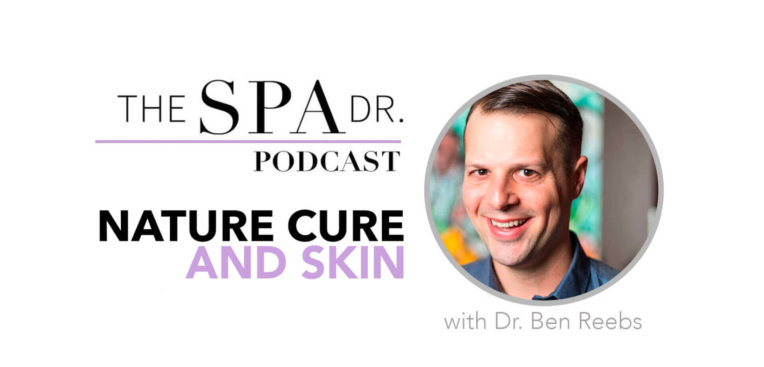
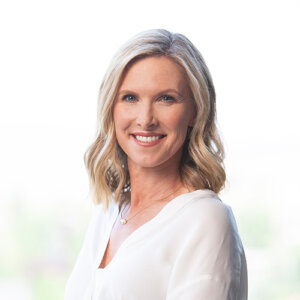
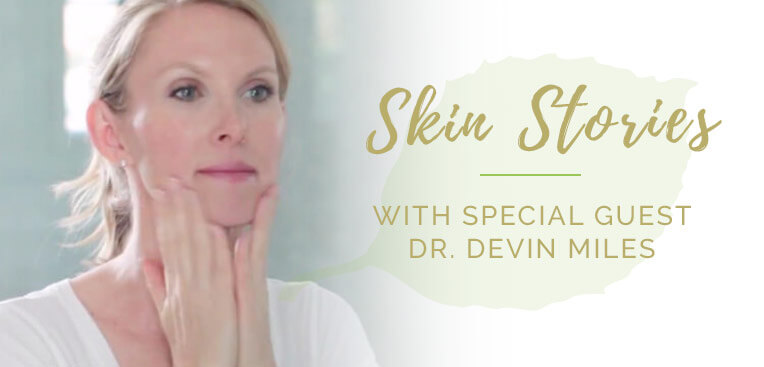
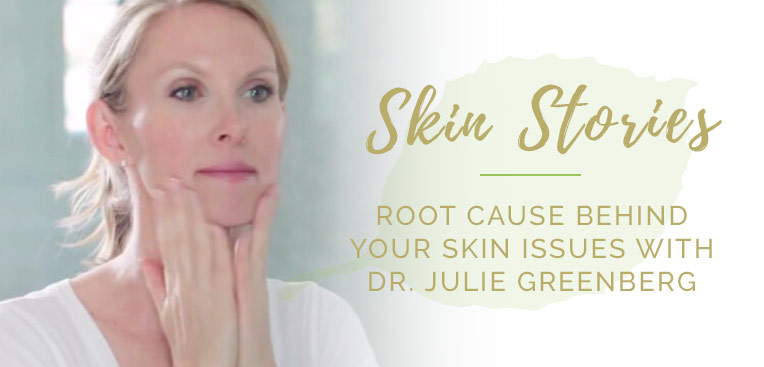
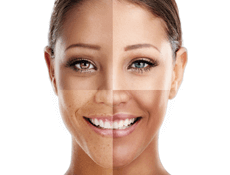
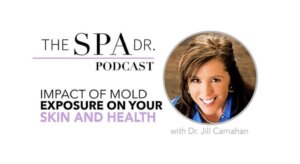
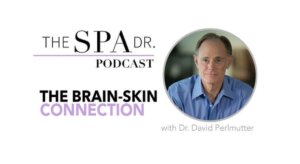
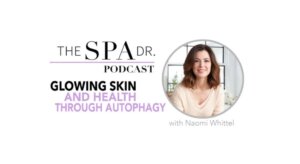
Reader Interactions